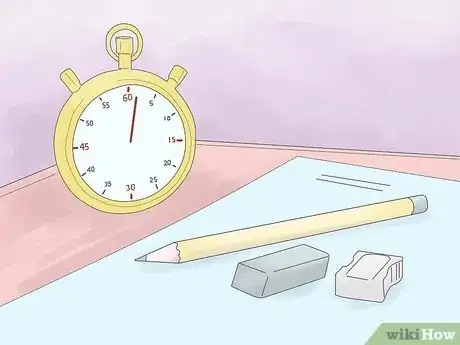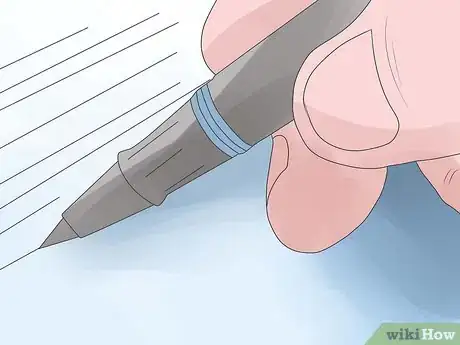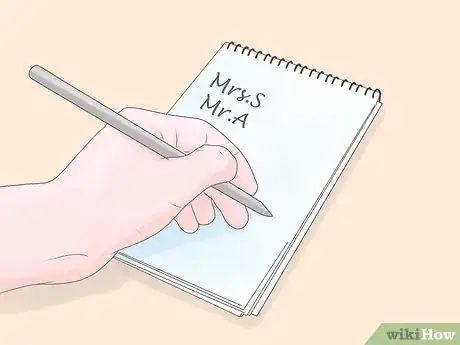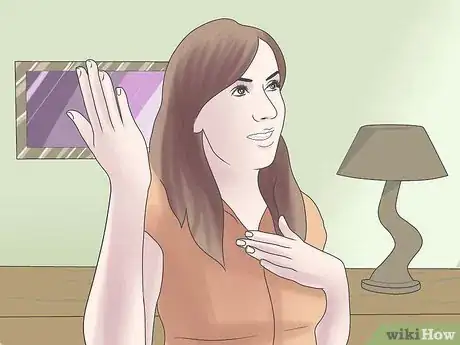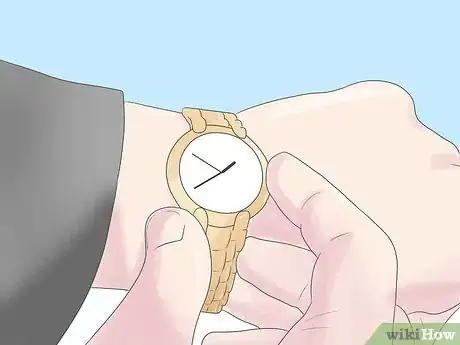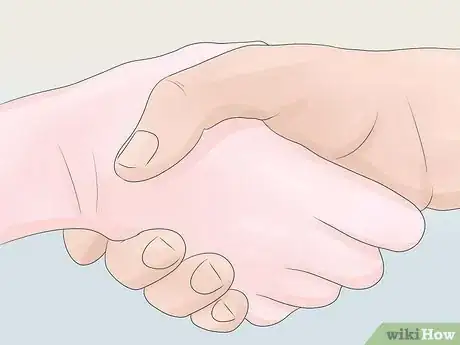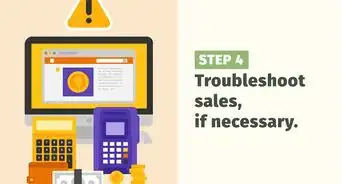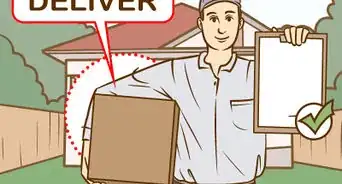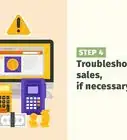This article was co-authored by Jeremy Rutman, PhD. Dr. Jeremy Rutman is a Patent Attorney and the CEO and Founder of RutmanIP, a boutique intellectual property firm in Israel. With over 15 years of experience, Dr. Rutman specializes in drafting patent applications in various fields such as physics, computer hardware and software, electrical engineering, mechanical engineering, green energy, and software. He holds a BS degree in Physics from Harvard University, where he graduated cum laude, and an MS and Ph.D. in Physics from the Technion - Israel Institute of Technology. Dr. Rutman has extensive experience turning start-up ideas into strategic assets and has published his work in many leading professional journals in the field.
There are 7 references cited in this article, which can be found at the bottom of the page.
wikiHow marks an article as reader-approved once it receives enough positive feedback. In this case, 88% of readers who voted found the article helpful, earning it our reader-approved status.
This article has been viewed 257,701 times.
Inventors and creative business people are always coming up with new ideas for how to do things or develop products that will make life easier. It's important to know how to protect an idea and market it successfully to make that idea a reality. Don't try to sell your ideas like a money-maker; what's more important than that, is to create its value that nobody can ever replicate.
Steps
Refining your idea
-
1Research your industry. Your idea’s feasibility relies upon its uniqueness, newness, and relevance. Talk to industry experts you know in person or via professional networks, read professional journals, and catch up on the latest industry news. You should have answers for the following questions:
- Has someone already implemented my idea? If they weren’t successful, is my version better?
- What are top industry competitors concerned about?
- How large are the profits and markets of this industry?
- How fast does this industry make decisions and change?
- What other industries or products are related to this industry?
- Do I like this industry? Is it worth my time?
-
2Know your idea inside and out. By fleshing out your idea, you make a more consistent and realistic product to sell. Create a list of bullet points of answers to the questions below. Use the answers as a foundation for selling your idea.[1]
- The problem you’re solving: What problem does your idea solve? How many people could benefit from your idea? What other solutions currently exist?
- The strengths and weaknesses of your idea: Why is your idea better? What do you need for your idea to be successful? Why might it fail?
- The opportunities and threats to your idea: How large is the market for your idea? How profitable is your idea? Who are your competitors?
Advertisement -
3Know the law. Your idea must be legal to sell for others to buy it. Contact intellectual property and patent lawyers to understand how to use the law to protect and sell your idea. Lawyers can help you get
- a nondisclosure agreement, which disallows individuals from sharing information you told them
- "patent pending" status, which allows you to retain your idea for a shorter period while you try to sell it.
-
4Test run your idea. This step proves whether your product can be executed and has any value. Test runs also show you how to improve your idea as a profitable product. Depending on your idea, a test run could mean anything from iterating on a functional prototype to starting a small business in your hometown.
- Create a timeline for yourself. Do you want to accomplish these test runs in a few days? A few years?
- Use mistakes as opportunities to improve your idea. Does anything need to be fixed? If so, fix it now, or understand why you cannot fix it, before selling it.
- Record your mistakes and how you learned from them: an inventor’s logbook proves the idea and each iteration are legally your own, as well as gives a history and context to your idea. [2]
- Even if you think you have a good idea, try to see if you can make a better one. If not, then you can explain to others that you have the best idea possible.
EXPERT TIPHelena Ronis is Co-founder and CEO of AllFactors, a unified web analytics software to drive company's marketing and business growth. She has worked in product and marketing in the tech industry for over 8 years, and studied Digital Marketing & Analytics at the MIT Sloan School of Management Executive Program.Business Advisor
 Helena Ronis
Helena Ronis
Business AdvisorHow should you prototype it? According to Helena Ronis, startup founder, it depends on the idea: "If it's mobile application, you can prototype a mobile application — if it's a web app, prototype a web app — if it's a gadget, put together something that is close enough. You need to figure out what the closest prototype is that you can put together to imitate that problem and solution that your idea encapsulates. And then keep testing."
Getting clients
-
1Create a rough draft of your pitch. A pitch is the story behind your idea and its significance. All pitches that you end up delivering should be a conversation with your client, but for now, create a story behind your idea to give yourself some working material. You could write it down, talk it over with a trusted advisor, make a presentation, or even craft an abstract storyboard. A pitch addresses
- what problem you want to solve
- how your idea solves that problem
- how to implement your idea
- what you expect the payoff of this implementation to be
-
2Write down your hard boundaries. These are limitations that you are not willing to overstep to sell this idea, including your reservation price, which is the least amount of profit you are willing to make before you walk away from a deal. Hard boundaries might include
- A timeline: how much time are you willing to dedicate to this idea?
- Industries: are there any companies or industries you are not willing to work with?
- Finances: how little money will you be happy with, and how much money are you willing to take?
- Values: what of your idea and beliefs are you willing to change to sell? Do you care most about the impact, profit, or relevance of your idea?
-
3Start a list of potential buyers. You can find them through word of mouth, online research, industry connections, and personal connections.[3] [4]
- Keep the longer list of potential buyers in case you have to go back and adjust your strategy
- Keep an open mind. Look at companies who are growing or failing. Use personal connections to open conversations with buyers.
- Know whether you plan to sell your idea once to one buyer or multiple times to competing buyers.
-
4Research your list of buyers and edit it accordingly. Personal connections help a lot, including the industry experts who helped you earlier in the process. Cold calling and emailing can also be effective. Listen to the opinions of those who turn down your product and see if you need to improve your product or target different buyers.
-
5Be persistent. Selling is hard, and selling a young idea is harder. Especially when you are trying to sell to a stranger or large company, you should continue to try to sell your idea even in the face of rejection.
-
6Set up a meeting. Once you are in contact with an interested buyer (either another individual or a firm), you can communicate further about your idea and its value. This meeting should be in person, or over video chat if applicable, and will be an opportunity for you to start selling your product.
- Schedule a meeting in a neutral and appropriate zone. This could be anywhere, from the conference room in a company’s building to a coffee shop.
- Schedule a time so that you can arrive on time and prepared.
Preparing for the sale
-
1Research your particular buyer as much as possible. You want to know as much as possible about your buyer so that you can showcase the buyer’s perspective when selling your idea. [5] You want to know the answers to the following questions:
- What is this buyer’s market and price point?
- Who are this buyer’s competitors?
- What does this buyer want in the next 5-10 years?
- What are this buyer’s strengths, weaknesses, opportunities, and threats?
-
2Acquire all necessary documents and materials for your meeting. This could include
- A nondisclosure agreement or similar legal paperwork
- Your inventor’s logbook or other proof of concept
- Business and operations documents that show projected profitability, market size, cost of implementation, and other benefits for the buyer
-
3Practice your pitch. Go back to your written down ideas about your product, and create flexible explanations and arguments about your product. A pitch is a conversation, not a presentation. Practice incorporating your buyer’s unique perspective into your argument for your idea.
- Practice out loud and with a friend.
- Practice with appropriate material. If you need documents detailing market value, expected growth, sample advertisements, images of a full-fledged product, or legal paperwork, then use them during practice.
- Practice until you are confident that you know your material and can manipulate it comfortably in a dynamic conversation. A speech is not engaging; a question and answer session is.
- Practice negotiations skills in particular.
-
4Revisit your hard boundaries. Have you crossed or gotten near any of them? Have any of your hard boundaries changed? If so, redefine your hard boundaries before your meeting so that you can make good decisions during the meeting.
Making the sale
-
1Dress appropriately. You want to wear clothing that either is similar to your buyer or speaks to your product. Show that you understand your client and product.
- Look online. Is the CEO of this company wearing jeans in his picture on the homepage? If so, you can probably also wear jeans.
- Check out the meeting venue before going there, if applicable. Is everyone else dressed in business casual? Consider dressing in business casual.
- Think about the impact of your idea and product. Are you pitching your product as a cutthroat tool for the most professional industry experts in traditionally operated firms? If so, consider wearing business formal.
-
2Be on time. This means, be at least five minutes early. Give yourself time to travel to and get situated wherever you’re having the meeting.[6]
- If you need to use the restroom, do so before the meeting.
- If you need to give yourself a confidence pep talk, do so well before the meeting.
-
3Have relevant paperwork and electronics with you. To sell your idea, you probably need some experiential aid: a video, slideshow, print-out, or other mixed media. Make sure you have all your materials with you, including a prototype if applicable.
-
4Sell yourself. You are the only voice for your product at the moment, so your attitude and personality are integral to selling your product. You should be professional and confident, while still showcasing your personality and passion for your idea. [7] [8]
- Keep your pitch simple and straightforward. Avoid overly-technical jargon, especially when your audience will not understand it.
- Tell a story by incorporating numbers. For example, you can tell a story about a potential consumer needing your product in his or her everyday life, then add in statistics to show how many consumers in Europe would find that story, and your product, applicable.
-
5Stick to your hard boundaries. If you cannot sell without crossing a hard boundary, do not be afraid to walk away. There are other buyers you can convince if your boundaries are reasonable.
-
6Do not accept an offer immediately. Ask for as much time as you think you need to process the offer before signing anything.
- Consider and communicate with other buyers
- Read the fine legal print and have a lawyer look over it
- Communicate with the buyer about changes. This can take multiple meetings.
-
7Accept or reject the buyer. This step can also take multiple meetings and conversations. Know that a rejection does not mean failure for your idea, and a successful sell does not necessarily mean a successful idea.
- Keep your line of communication open with the buyer in case a future opportunity opens
- If the deal or sale is successful, document it with signatures and official papers. Have proof of the sale and its terms for both yourself and the buyer.
Expert Q&A
-
QuestionHow can I start patenting my idea in the United States?
 Jeremy Rutman, PhDDr. Jeremy Rutman is a Patent Attorney and the CEO and Founder of RutmanIP, a boutique intellectual property firm in Israel. With over 15 years of experience, Dr. Rutman specializes in drafting patent applications in various fields such as physics, computer hardware and software, electrical engineering, mechanical engineering, green energy, and software. He holds a BS degree in Physics from Harvard University, where he graduated cum laude, and an MS and Ph.D. in Physics from the Technion - Israel Institute of Technology. Dr. Rutman has extensive experience turning start-up ideas into strategic assets and has published his work in many leading professional journals in the field.
Jeremy Rutman, PhDDr. Jeremy Rutman is a Patent Attorney and the CEO and Founder of RutmanIP, a boutique intellectual property firm in Israel. With over 15 years of experience, Dr. Rutman specializes in drafting patent applications in various fields such as physics, computer hardware and software, electrical engineering, mechanical engineering, green energy, and software. He holds a BS degree in Physics from Harvard University, where he graduated cum laude, and an MS and Ph.D. in Physics from the Technion - Israel Institute of Technology. Dr. Rutman has extensive experience turning start-up ideas into strategic assets and has published his work in many leading professional journals in the field.
Patent Attorney First, do some research so you know what's out there. A great resource for this is patents.google.com. After you've researched, start writing a provisional patent, which doesn't require a specific format. As you write, describe everything about your invention in sufficient detail so someone skilled in that particular field could reproduce it. You can use general or field-specific terms, as long as all of the information you reference is accessible to the public domain. Then, submit a PDF description of your patent to the United States Patent Trademark Office as a provisional patent. A provisional patent gets you a year of coverage,
First, do some research so you know what's out there. A great resource for this is patents.google.com. After you've researched, start writing a provisional patent, which doesn't require a specific format. As you write, describe everything about your invention in sufficient detail so someone skilled in that particular field could reproduce it. You can use general or field-specific terms, as long as all of the information you reference is accessible to the public domain. Then, submit a PDF description of your patent to the United States Patent Trademark Office as a provisional patent. A provisional patent gets you a year of coverage, -
QuestionHow do I sell my ideas to a company?
 Community AnswerIn order to license your ideas, they would have to be registered under a company or person's name. Then you just have to convince a company that your idea is useful and you'll be paid a royalty.
Community AnswerIn order to license your ideas, they would have to be registered under a company or person's name. Then you just have to convince a company that your idea is useful and you'll be paid a royalty.
References
- ↑ http://ctb.ku.edu/en/table-of-contents/assessment/assessing-community-needs-and-resources/swot-analysis/main
- ↑ http://info.legalzoom.com/sell-idea-patent-20187.html
- ↑ http://www.entrepreneur.com/article/159542
- ↑ http://www.entrepreneur.com/article/219582
- ↑ https://www.wikihow.com/Deliver-a-Good-Sales-Pitch
- ↑ http://wolfram.org/writing/howto/sell/first_meeting.html
- ↑ https://www.linkedin.com/pulse/20131027224632-5670386-how-to-sell-ideas-like-gladwell
- ↑ https://www.wikihow.com/Deliver-a-Good-Sales-Pitch
About This Article
If you have a great idea that you’d like to sell, create a pitch, or a story that tells someone the details of your idea. In particular, your pitch should cover the problem you’re trying to solve, how your idea solves that problem, and how to implement your idea. Before you deliver your pitch, decide the least amount of money you’re willing to take and any other boundaries that are important in your negotiations. Make a list of potential buyers, and be persistent in trying to pitch your idea until you find someone who’s interested. Keep reading for tips on completing the sale, including how to dress to improve your chances of success!



